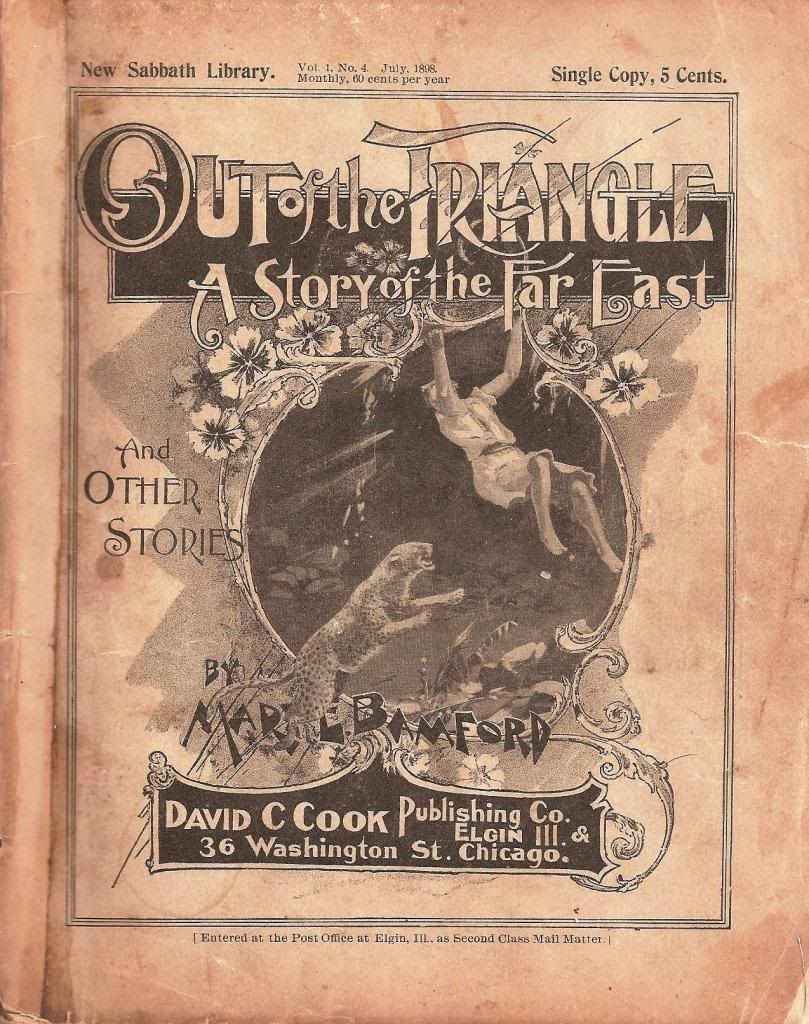The time away from the internet, however, was not lost in idleness, as I took the time to read a few things I have been meaning to for quite some time, namely the "Mr. Wong" series of short stories, originally serialized in Collier's during the 1930s (as well as viewings of the related films, which I am thinking of writing a good deal about, concerning their relation to a topic of utmost interest to me - nativist sentiment in the early twentieth century), in addition to The Lonely Crowd, David Reisman's 1950 analysis of changing characterological structures in American culture following its emergence into the realm of post-industrial society. While I am working on these projects, I wanted to take the time to post something that some readers may find of interest; an artifact of which I can admit I am rather ignorant of. I am hoping to find any further evidence concerning it, in order to supplement the meager amount of information I have been able to accumulate thus far. In light of my interest in all things related to modern (establishment of the Qing Dynasty, and onward) Chinese history (and, more recently, popular depictions of the Orient, by way of the Occident), I recently acquired this article of ephemera:
 |
| The New Sabbath Library - Vol.1, No. 4 - July, 1898 |
"To meet the growing demand for pure literature at popular prices, we began in Aptil, 1898, the issue of a monthly publication entitled THE NEW SABBATH LIBRARY. The success of these issues has proved to be unprecedented. Although appealing particularly to young people, they will interest all lovers of good and wholesome literature, whether young or old."
This particular issue (Vol. 1, No. 4 - July, 1898) contains several short stories all of which feature, for the most part, individuals of foreign origins converting to Christianity, or solitary Christians making their way in a "heathen-dominated" setting. According to its advertisement, Young Peoples' Weekly (and, presumably, Library) was written by, and intended to inspire new, Christian missionaries abroad. Tales of Messianic deliverance were not the only stories to be found in these pages, however; political and social issues of the day were addressed, evidenced by the appearance of T.S. Arthur's "Ten Nights in a Bar-Room" in Library's eighth issue, which proclaimed it to be "the most thrilling and powerfully written temperance story ever produced." "The Victory of Quang Po," describing the conversion of a Chinese fisherman and his relationship with a resident of an American colonial concession, is the story I found most relevant to my current avenue of research.
 |
| Illustration from "The Victory of Quang Po" |
 |
| Back Cover |
The stories themselves, I must admit, leave something to be desired, and, more than likely, are not going to attract any adventure or action-story enthusiasts, nor do I believe that is the authors' intentions; if one is looking for stories to justify their current, or potential, missionary ventures, then this title certainly fulfills such a purpose. Seekers of action tales would more than likely have looked elsewhere. While certainly nativist in much of their structure, unfortunately anti-Semitism also appears in some of the stories published in The New Sabbath Library; scholar Michael N. Dobkowski has pointed out that the works of Kinglsey, as published in the Library, contributed to an understanding of Judaism as backwards and degenerate, a fact only made worse by the publication's low price of 5 cents, making it purchasable to both adults and youth alike.
All things considered, I simply found this to be an interesting artifact from nineteenth century American escapism. While filled with piety (not unlike a majority of nineteenth century dime novels and story papers I have read, albeit without the emphasis on Jesus and Christianity, by name), and not as action-orientated as some of its contemporaries, The New Sabbath Library nonetheless offers interesting insight into the history of printed, working-class literature of the era, as well as a small view of the socio-religious atmosphere, for better or for worse, of the time.
Sources:
Advertisement, "The New Sabbath Library - A Monthly Publication," The Dial - A Semi-Monthly Journal of LIterary Criticism, Discussion, and Information , Vol. XXV, No. 294, 16 September, 1898, 201.
David C. Cook Publishing Company, The New Sabbath Library Vol. 1, No. 4, July 1898.
Dobkowski, Michael N. “American Anti-Semitism: A Reinterpretation.” American Quarterly 29, No 2 (Summer, 1977): 170.

No comments:
Post a Comment